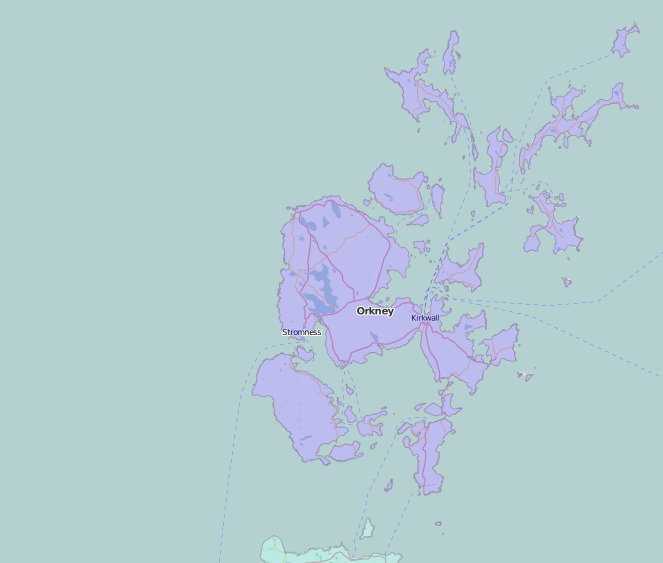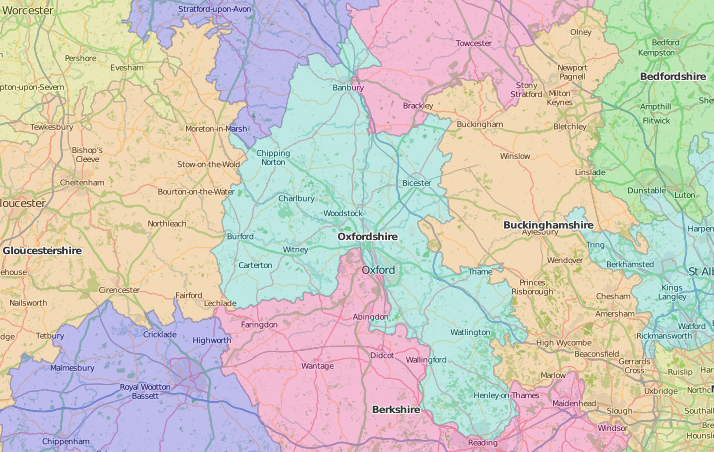Life on the edge and at the centre, in Orkney and Oxfordshire.

Orkney is inset on Speed’s map of Scotland; amongst the bunched up islands he shows Mainland as ‘Pomonia’ (Pomona) following a 16th century mistranslation from Latin. The mistake is repeated by Greenvile Collins, royal hydrographer, who made it to Orkney in his second, northbound survey of the sea-coast from the Thames “Describing all the harbours, rivers, bays, roads, rocks, sands, buoys, beacons, sea-marks, depths of water, latitude, bearings and distances from place to place, the setting and flowing of tydes, with directions for the knowing of any place; and how to harbour a ship in the same with safety”. His work took seven years and getting to Orkney meant crossing “a Channel, called Pentland-Frith, where is the strongest Tyde in all the Coast of Great Britain.”
John Fraser came from Wick in Caithness, less than 40 miles across that dangerous stretch of water, and one of the many Scottish items in his collection is the carefully exact “observes” of John Brand (1668?-1738): A brief description of Orkney, Zetland, Pightland-Firth & Caithness, wherein, After a short journal of the Author’s voyage thither, These Northern Places are first more Generally Described, Then a Particular View is given of the several Isles thereto belonging; Together with an Account of what is most Rare and Remarkable therein: with the Author’s Observes thereupon (1701). Brand persists in mentioning “Pomona or the Mainland”, on which Stromness is praised as having “the best harbour in Orkney”.
The Muir collection has Kenneth Muir’s copy of George Mackay Brown’s 11th century tale Vinland, and, appropriately, work by another Orcadian poet, and mentor to Brown, Edwin Muir (1887-1959) from his First poems (1925) to The voyage and other poems (1946). Muir, like Orkney-born poet David Vedder (1790-1854), left for Scotland in childhood but Stromness (Viking Hamnavoe, ‘safe harbour’) provided a lifetime mooring for George Mackay Brown (1921-1996).

Folk in Oxfordshire still refer to themselves in Latin – Oxon is the only Latin county abbreviation. Speed’s map of the county is covered with trees and hills and churches, and a plan of Oxford in which he reckons “both heaven and earth accorded to make the inhabitants healthful and happy”. Their new library probably helped: Thomas Bodley refounded his library in 1602, and the building was being expanded (1610-1612) to accommodate all the new books just as Speed’s Theatre was being published. Another famous library spent 50 years at the eastern edge of the county, in the rectory at Chinnor. Via a succession of sales and inheritances, the books of the late Isaac Newton (1642-1727) arrived at Chinnor around 1728, and left around 1778, having acquired the bookplates of two rectors: “Revd Carol(u)s Huggins, Rector Chinner in Com. Oxon.” and his nephew-in-law, James Musgrave “Philosophemur”. Sometimes one pasted over the other, as is the case in Special Collections.
At Banbury in the north you could almost build a library just from the publications of John Golby Rusher (1784-1877) chapbook and children’s publisher of the 1820s to 1840s. Rambles down the western edge of the county would take you into the Cotswolds, to explore the Highways and byways with Herbert A. Evans (1916) or you could study the natural history of Oxfordshire and beyond with the help of Robert Plot (1677) and Richard Walker’s The flora of Oxfordshire and its contiguous counties (1833).
Special Collections classmarks of items cited:
Orkney:
- Greenville Collins (active 1679-1693), Great Britain’s coasting pilot. The first part. Being a new and exact survey of the sea-coast of England, from the … Thames to the westward, with the islands of Scilly, and from thence to Carlile…. The second part. Being a … survey of the sea-coast of England and Scotland, from the … Thames to the northwards, with the islands of Orkney and Shetland (1693): SPEC Q2.13/oversize
- John Brand (1668?-1738), A brief description of Orkney, Zetland, Pightland-Firth & Caithness, wherein, After a short journal of the Author’s voyage thither, These Northern Places are first more Generally Described, Then a Particular View is given of the several Isles thereto belonging; Together with an Account of what is most Rare and Remarkable therein: with the Author’s Observes thereupon (1701): SPEC Fraser 1699
- George Mackay Brown, Vinland (John Murray, 1992): SPEC Muir E.88
- Edwin Muir (1887-1959), First Poems (1925), Chorus of the newly dead (1926), Variations on a time theme (1934), Journeys and places (1937), The narrow place (1943), The voyage and other poems (1946): SPEC Muir 217-222
- David Vedder (1790-1854), Orcadian sketches; legendary and lyrical pieces (1832): SPEC Y83.3.735
Oxfordshire:
- Catalogi librorum manuscriptorum Angliæ et Hiberniæ: in unum collecti, cum indice alphabetico (Oxoniae: e Theatro Sheldoniano, 1697): SPEC Y69.5.50*. From the library of Isaac Newton, with a page of notes by him.
- Battledores. Printed by J.G. Rusher (1815?): JUV.191:1-6; chapbooks Oldham 34-37; JUV 143:2,5
- Herbert A. Evans, Highways and byways in Oxford and the Cotswolds; with illustrations by Frederick L. Griggs (1916): SPEC S/DA670.C83.E91
- Robert Plot, The natural history of Oxfordshire (1677): SPEC Y67.5.17
- Richard Walker (1790 or 1791-1870), The flora of Oxfordshire and its contiguous counties, (comprising the flowering plants only;) arranged in easy and familiar language, according to the Linnaean and natural systems; preceded by, An introduction to botany, with illustrative plates (1833): SPEC Y83.3.431